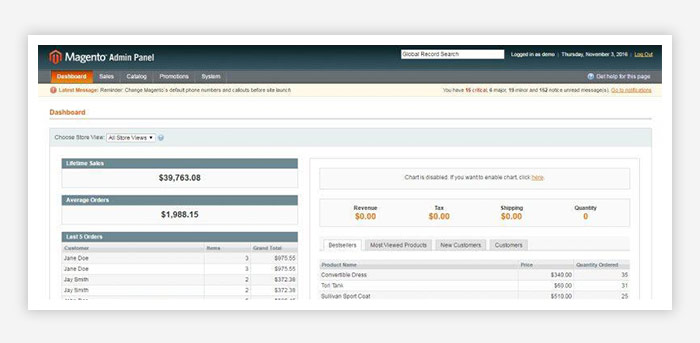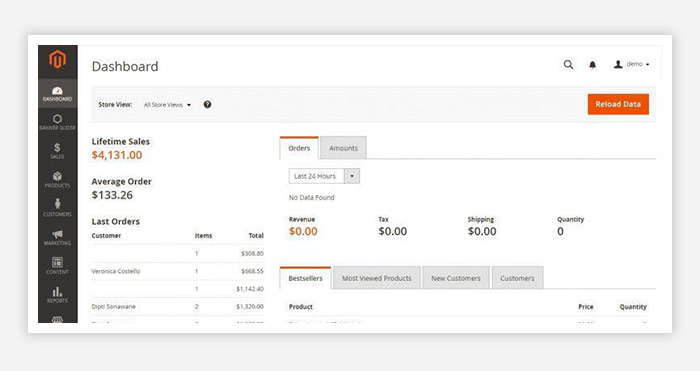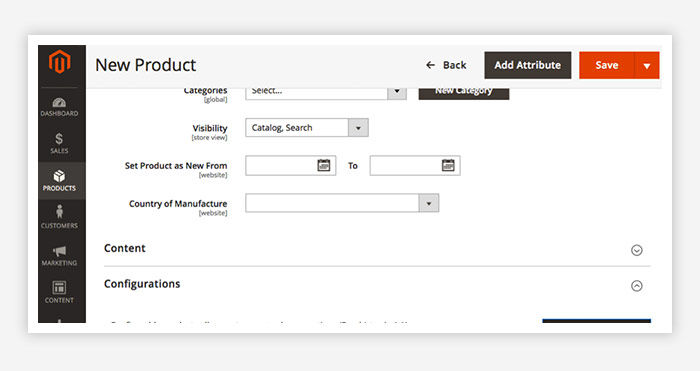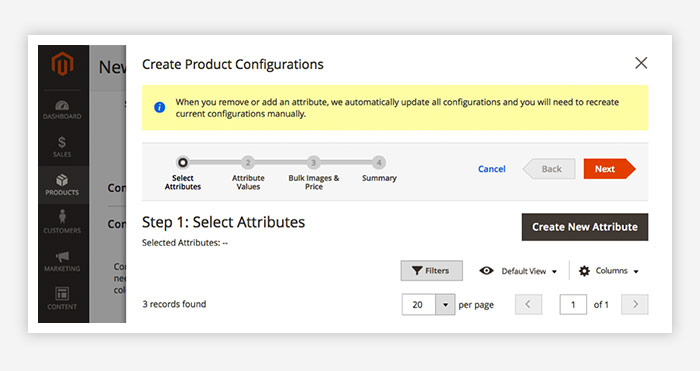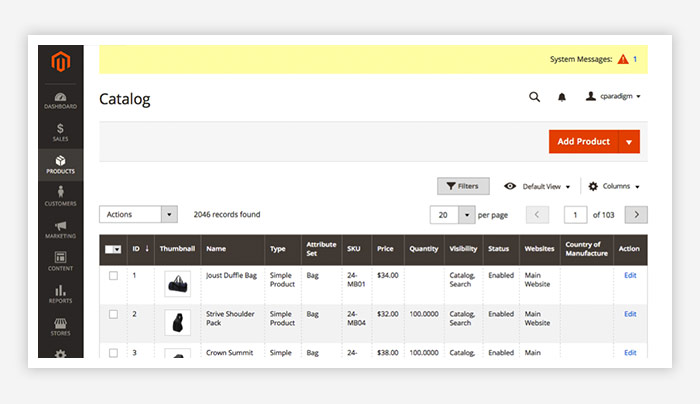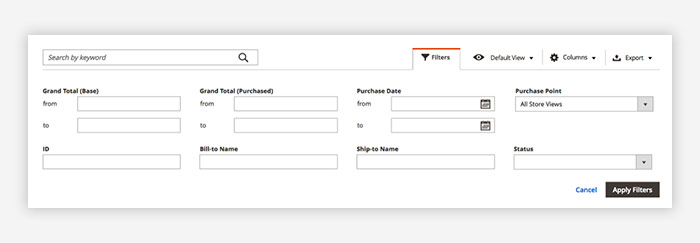What Makes Magento2 Onpage optimisation Better than Magento1.x
When we talk about search engine optimisation (SEO), there are two aspects – on-page optimisation and off-page optimisation.
Both are essential for optimising an e-commerce store’s visibility on the search engine results page. However, on-page optimisation is often neglected by merchants and retailers. That is not right. On-page optimisation gives users full control over their e-commerce store management.
Magento is a popular e-commerce platform unique for its robust features and superior performance in the search engines. It has always been so, and there is no doubt about its high-quality performance. But with the release of Magento 2, e-commerce websites have more exciting features to add to their store.
Here are some advantages that make Magento 2 optimisation better than Magento 2
Backend Features
#1 – A Friendly and Intuitive Admin Panel
Magento 2 has a friendly and intuitive user admin panel compared to Magento 1. A close look at both the panels suggests so.
The admin panel of Magento 1 has a horizontal menu outline. But in Magento 2, the menu section is placed vertically on the left side of the panel.
The design has been kept flat in Magento 2, and the implementation of larger tap buttons and fonts makes it clear that the interface has been developed from the users’ point of view most of whom have a non-technical background.
But this is only the design part, and more features explain how Magento 2 is user-friendly.
#2 – A Store Owner’s Dashboard
Magento 2 has a dashboard that highlights what a store owner typically cares for the most. Such as The Lifetime Sales made by a store or the Average Orders that a store receives. Users can click and view the revenue for the different duration of time.
#3 – Streamlined Product Configuration
Magento Configuration is an obvious choice if you have a merchandise shop, where customers can decide their product attributes before adding it to the shopping cart.
Configurable products can be anything, be it the shoe size, apparel colors, jewelry materials and more. It is very complex and hence must be carefully approached lest it affects the shop performance.
But with Magento 2, the configuration of products and its attributes has become streamlined. You don’t have to individually create a product page and then associate it with a parent configurable page. That’s because users can now create their configurable products from a single page.
The integration of attribute creation into this step will now help to speed up the workflow when you create new products.
To add new products to the website, go to – Products > Catalog > Add Product
To create new configurations go to New Product Page > Create Configurations
Clicking on the ‘Create Configurations’ will take you through Select Attributes from where you can create new options for product configuration.
#4 – Customizable Grid Pages
Magento 2 has a customized Sales options that encourage a streamlined workflow. Such as – the “Sales –Order grid page” and “Products – Catalog grid page”.
Go to Products > Catalog or Sales > Orders. Find other familiar sections featuring Filters, Default View and Columns that will show a particular subset of the product and its orders.
The filter helps to organize page results based on a particular subset of product orders.
Use the View tab to save the specific filter and Column settings. You can Save to View as using something descriptive as the title and then save it for later use. So, the next time you login, you can back to the particular setup without having to configure it manually.
It helps to save time and makes the admin function more efficient.
You can decide which columns to show and which not to from the Column drop down menu. Apart from that, you can also rearrange your columns, click and drag them to reorder the grid page design.
Frontend Features
A store’s front end matters a lot when it comes to the user experience of new visitors who land on your websites. There are a few things that make Magento a unique front end store set up. These are as follows –
#1 – Magento 2 Luna theme
The Magento front-end feature has been established using this feature. The Magento 2 luna theme performs much faster and has a responsive web design that comes with its advantages and disadvantages.
#2 – Faster Performance
Customers will, therefore, no longer have to wait for the entire content to load first before reading it in full length.
#3- New Check out Process
The Magento 2 comes with a new 2-step check out process compared to Magento 1 6-step checkout process. Retailers can now display purchase and orders details along with the product.
Is it really worth the Shift?
To explain that here are some pros and cons that you need to know about Magento 2. You can read them and decide for yourself whether Magento 2 is right for your store or not.
Pros
- Popular Payment Gateways
Magento 2 already supports popular payment gateways that are used by merchants worldwide. Some of the names of these payment gateways include –
- PayPal
- Authorize.net
- Braintree
- CyberSource (Enterprise Edition)
- WorldPay (Enterprise Edition)
These payment gateways are easy to integrate and gives users better user experience.
- Built-In Full Page Cache
Magento 2 comes with a built-in full page cache that helps to reduce things like server load, lag, and bandwidth usage. As a result, your Magento store’s loading page time is cut down by half, making page delivery super fast. An optimised cache in Magento 2 can also mean improved overall experience and higher conversion rate.
Cons
- Choosing New Themes
There are lots of great themes to choose from Magento 2. But what if you want to retain an old theme of your old store?
Transferring a theme from Magento 1 to Magento 2 is difficult. That’s because Magento 1 themes are unportable. Upgrading a store to Magento 2 means that you would have to think about rebranding your store face, which is a problem in case if you have already established a brand identity for yourself.
- Unportable Extensions
Another disadvantage of upgrading from Magento 1 to Magento 2 is that most of the extensions are unportable. In that case, merchants and retailers who are thinking of upgrading their store will have to repurchase the extensions once more or wait until the updated extensions are available for download.
But then Magento is growing every day, and hopefully, the problem will get resolved soon.
Conclusion
The platform has a lot of potential for merchants and Magento developers. So if you are ready to improve your Magento site’s onsite optimisation, it’s time to make the change! Give us a shout if you are considering Magento 2.0. You can reach us here.
Magento
eCommerce
Magento is the leading solution for eCommerce, and we’re specialists. Magento is easy-to-use, completely customisable and endlessly scalable.

Bespoke
Builds
We offer custom web development services for any requirement. Manufacturing from scratch, we deliver a project entirely tailored to your needs.

Working with brands nationally from our offices in Cardiff and Exeter, our tenacious team of designers and developers deliver sophisticated results every time.
